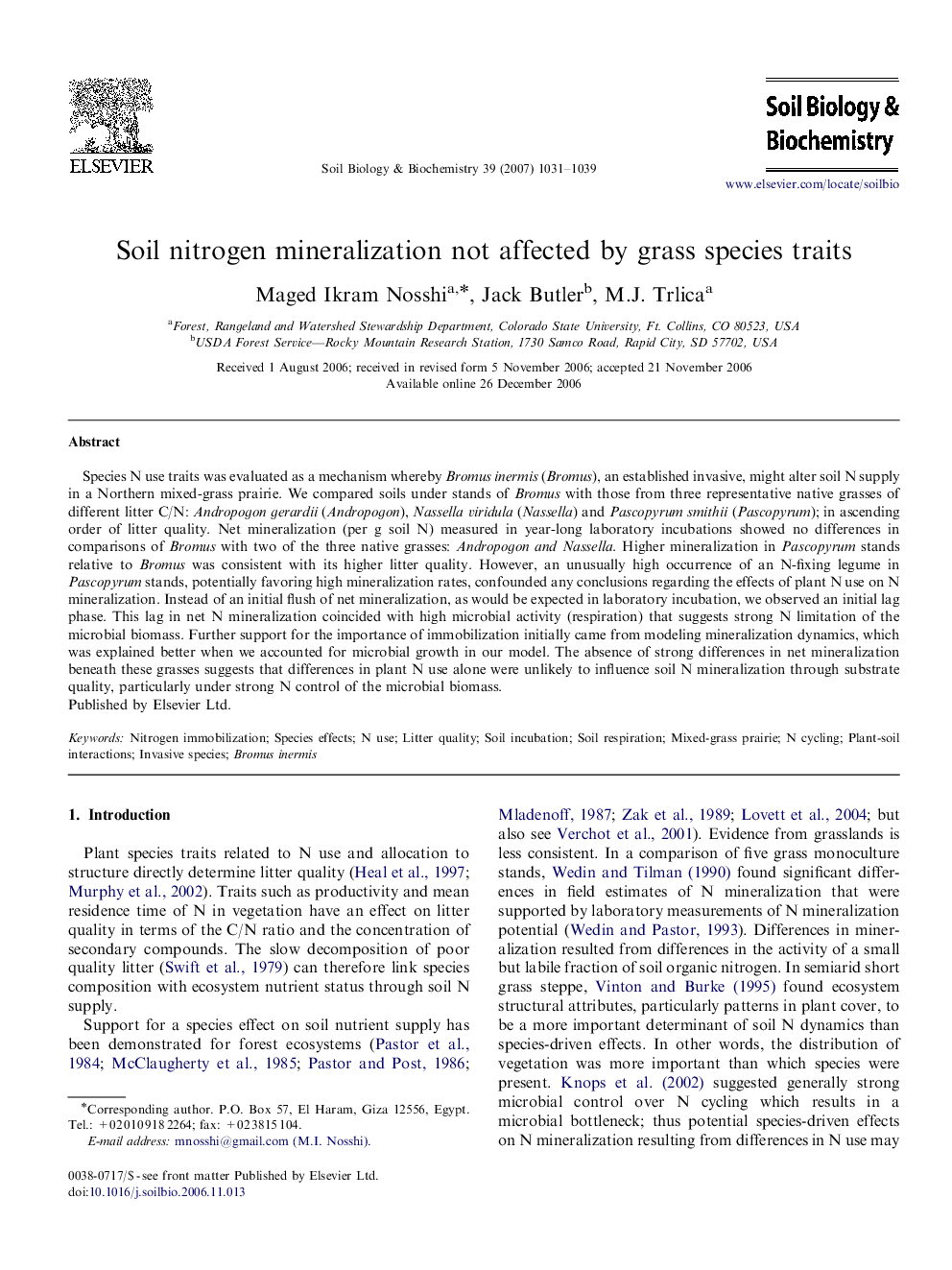| Article ID | Journal | Published Year | Pages | File Type |
|---|---|---|---|---|
| 2026410 | Soil Biology and Biochemistry | 2007 | 9 Pages |
Species N use traits was evaluated as a mechanism whereby Bromus inermis (Bromus), an established invasive, might alter soil N supply in a Northern mixed-grass prairie. We compared soils under stands of Bromus with those from three representative native grasses of different litter C/N: Andropogon gerardii (Andropogon), Nassella viridula (Nassella) and Pascopyrum smithii (Pascopyrum); in ascending order of litter quality. Net mineralization (per g soil N) measured in year-long laboratory incubations showed no differences in comparisons of Bromus with two of the three native grasses: Andropogon and Nassella. Higher mineralization in Pascopyrum stands relative to Bromus was consistent with its higher litter quality. However, an unusually high occurrence of an N-fixing legume in Pascopyrum stands, potentially favoring high mineralization rates, confounded any conclusions regarding the effects of plant N use on N mineralization. Instead of an initial flush of net mineralization, as would be expected in laboratory incubation, we observed an initial lag phase. This lag in net N mineralization coincided with high microbial activity (respiration) that suggests strong N limitation of the microbial biomass. Further support for the importance of immobilization initially came from modeling mineralization dynamics, which was explained better when we accounted for microbial growth in our model. The absence of strong differences in net mineralization beneath these grasses suggests that differences in plant N use alone were unlikely to influence soil N mineralization through substrate quality, particularly under strong N control of the microbial biomass.
